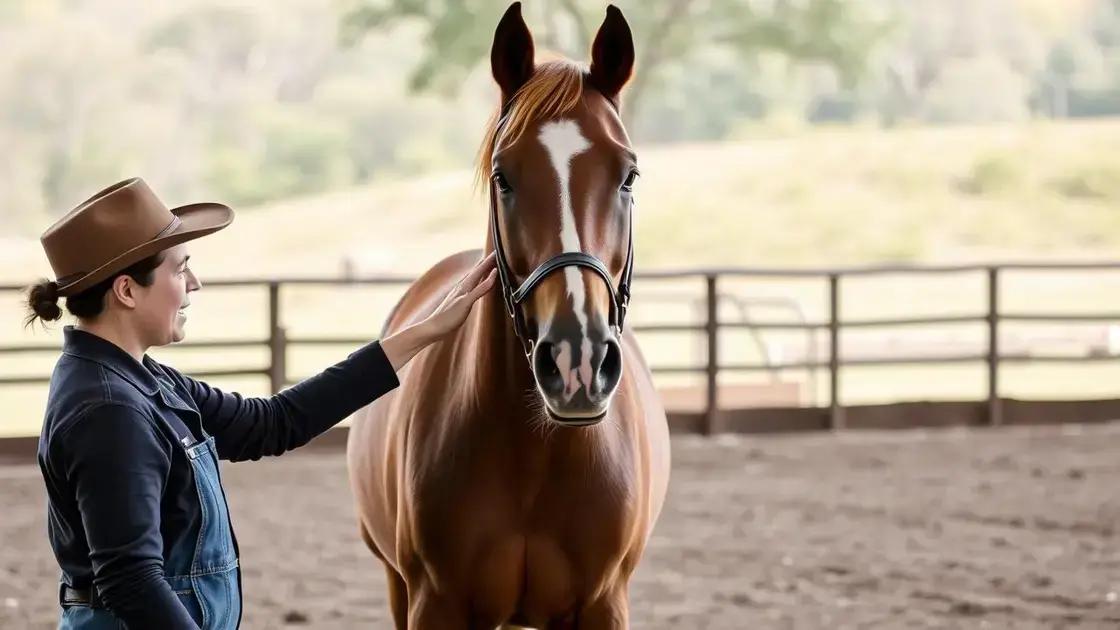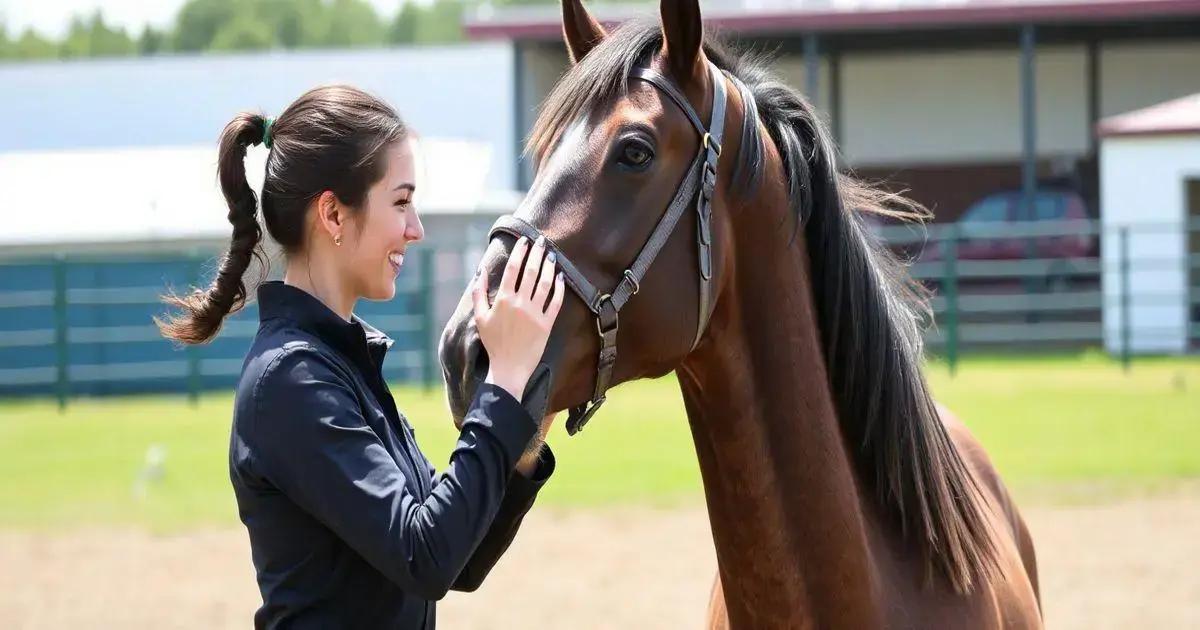Horse trick training enhances the bond between you and your horse by fostering communication, trust, and fun. Key signs of success include observing your horse’s enjoyment, maintaining consistent cues, and avoiding common training mistakes. Emphasizing positive reinforcement and patience creates a rewarding experience, unlocking exciting possibilities in your equine relationship.
If you’re delving into horse trick training, understanding the signs it’s working for you is crucial. Mastering horse tricks not only enhances communication between you and your horse but also strengthens your bond. In this article, we will cover the fundamental aspects of horse trick training, how to identify positive signs from your horse, and the common mistakes to avoid, ensuring a rewarding experience for both of you.
Understanding Horse Trick Training

Understanding Horse Trick Training is essential for anyone looking to enhance their connection with their horse. Horse trick training is not just about teaching tricks; it’s about building trust and communication.
First, you need to establish a solid foundation. This includes basic groundwork and respect for each other. Start with simple commands and gradually introduce more complex tricks as your horse becomes comfortable.
Watching the horse’s body language is crucial. Signs of relaxation or excitement can indicate how your horse feels about the training. A relaxed horse is more likely to learn effectively. Use positive reinforcement, like treats or praise, to encourage good behavior.
Consistent practice is key to success in horse trick training. Short, frequent sessions are more effective than long, exhausting ones. Gradually increase the difficulty of tricks as your horse masters each step. Never rush the training process; patience is vital.
Incorporate fun into your training sessions. This not only keeps your horse engaged but also strengthens your bond. Remember, a happy horse is more likely to succeed in learning tricks.
The Role of Communication
Effective communication with your horse can significantly enhance training. Clear cues, whether verbal or physical, help your horse understand what is expected. Use consistent commands and gestures to create clarity.
Lastly, always be aware of your horse’s mood. If your horse seems frustrated or tired, it’s best to take a break. This helps maintain a positive atmosphere for learning.
Signs Your Horse Enjoys the Trick

When it comes to horse trick training, recognizing the signs your horse enjoys the trick is essential for building a positive experience. When a horse is enjoying the process, its body language and behavior will reflect this happiness.
Positive Body Language is the first indicator. Look for relaxed ears, a soft eye, and a swishing tail that indicates comfort. If your horse seems eager to participate, this is a good sign.
Another sign is enthusiastic participation. If your horse willingly approaches you and engages with the props or equipment needed for the trick, it shows excitement. A horse that responds quickly to cues and seems to have fun is thoroughly enjoying the training.
Using playful behavior is another indication your horse is enjoying the trick. Horses that feel comfortable often display playful actions like bouncing in place or playfully nudging you for attention.
Vocalizations can also indicate enjoyment. Some horses may whinny or nick when they are having fun. This vocal expression is their way of communicating excitement and happiness.
Lastly, after training sessions, observe how your horse behaves. A horse that follows you around and seeks your attention is likely enjoying the tricks and the overall interaction.
Common Mistakes in Horse Trick Training

When engaging in horse trick training, avoiding common mistakes can greatly enhance your success. Understanding these pitfalls helps you create a more positive experience for both you and your horse.
One of the most frequent errors is rushing the learning process. Horses, like people, learn at their own pace. Pushing your horse to perform a trick too quickly can lead to frustration and anxiety, making learning less enjoyable.
Another mistake is inconsistent cues. Using different signals for the same command can confuse your horse and hinder learning. Always use consistent verbal and physical cues for the best results.
Ignoring the horse’s body language is also a common oversight. Horses communicate their feelings through their movements and expressions. Not paying attention to signs of stress or discomfort could lead to negative experiences during training.
Failing to use positive reinforcement is a significant mistake. Rewarding your horse with treats, praise, or affection after successfully completing a trick encourages repetition and builds a positive association with the training.
Lastly, overtraining can lead to burnout. Horses need breaks just like any athlete. Longer practice sessions can cause fatigue and disinterest, so always ensure to incorporate rest periods for effective learning.
Building a Stronger Bond Through Tricks

Building a strong bond with your horse through tricks involves trust and communication. Trick training can enhance your relationship while providing mental stimulation for your horse.
Start by establishing trust. When your horse knows you are a safe partner, it will be more eager to learn. Begin with simple tricks that require your horse to come towards you or follow your lead.
Use positive reinforcement to encourage your horse. Treats, verbal praise, and affection can make a significant difference. Rewarding your horse immediately after it performs a trick will help reinforce the behavior and create a joyful experience.
During training, maintain a calm and positive environment. Horses are sensitive to their handler’s emotions. If you stay patient and relaxed, your horse will feel more comfortable and willing to engage.
Involve playfulness in your training sessions. Use toys or playful behaviors to make tricks more enjoyable. Horses often respond positively to engaging and fun activities, thereby strengthening your bond.
Finally, be attentive to your horse’s reactions during training. This kind of attention also builds trust. Acknowledging your horse’s feelings and respecting its limits strengthens the connection you share.
In Summary: Unlocking Success Through Horse Trick Training
Horse trick training is an incredible way to build a deeper bond with your equine friend. By understanding the key signs of successful training, recognizing your horse’s enjoyment, and avoiding common pitfalls, you can create a rewarding experience for both of you.
Utilizing positive reinforcement and maintaining open communication fosters trust, allowing your horse to thrive in a training environment. Remember to keep sessions fun and engaging, which will not only enrich your horse’s learning experience but also strengthen your relationship.
Ultimately, by embracing these principles and focusing on building trust, you can unlock exciting possibilities and deepen your connection with your horse.
FAQ – Frequently Asked Questions about Horse Trick Training
What are the benefits of horse trick training?
Horse trick training strengthens the bond between you and your horse while providing mental stimulation and enhancing communication.
How can I tell if my horse enjoys the training?
Look for signs like positive body language, enthusiasm during participation, and playful behavior, which indicate your horse is enjoying the tricks.
What are some common mistakes in horse trick training?
Common mistakes include rushing the learning process, using inconsistent cues, ignoring body language, and failing to provide positive reinforcement.
How can I build a stronger bond with my horse through tricks?
Establish trust through positive reinforcement, maintain a calm training environment, and involve playful elements to foster a deeper connection.
What are effective techniques for positive reinforcement?
Offering treats, verbal praise, and affection immediately after a successful performance helps reinforce good behavior and encourages your horse.
How often should I train my horse with tricks?
Short, frequent training sessions are best. Aim for several brief sessions each week to keep your horse engaged without causing burnout.












